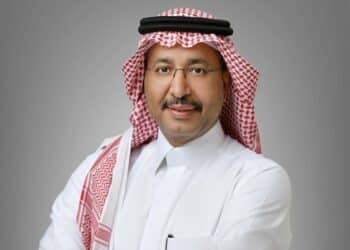Hotel News ME reviews the comings and goings of 2015
It’s been an eventful year for the Middle East’s hospitality industry with  2015 characterised by challenging market conditions, a rush of new hotel supply and changing guest dynamics. On the plus side, the number of tourists and air passengers travelling to the region continues to grow year on year, particularly to Gulf destinations such as the UAE, Saudi Arabia, Qatar and Oman, fuelled by the expansion of their respective airlines.
2015 characterised by challenging market conditions, a rush of new hotel supply and changing guest dynamics. On the plus side, the number of tourists and air passengers travelling to the region continues to grow year on year, particularly to Gulf destinations such as the UAE, Saudi Arabia, Qatar and Oman, fuelled by the expansion of their respective airlines.
As a result, new highly-populous source markets have emerged for the Middle East hotel industry such as China and Africa.
This influx has helped to offset a decline in visitors from Russia, the result of a devalued Rouble and low oil prices.
The cost of crude oil hit rock bottom at $38 a barrel in 2015, spelling good news for airlines, but hampering the investment power of Gulf nations reliant on oil income.
However, an increase in Public Private Partnerships (PPP) region wide has meant investments in large infrastructure projects, many of which are travel, tourism and hotel related, have kept on track and continue to enhance the Middle East’s visitor appeal.
In the UAE, as the country leads up to the World Expo 2020, a raft of mega projects are now in full swing, from the expansion of the new Al Maktoum International Airport – Dubai World Central (DWC), to the development of five new theme parks between 2016 and 2018.
The Middle East and Africa (MEA) hotel pipeline is also robust, with 191,047 rooms across 763 hotels under contract, according to September’s 2015 STR Global Construction Pipeline Report.
This represents a 26.3% increase in the number of rooms under contract and more significantly, a 42.1% hike in the number of rooms actually under construction, when compared to September 2014 figure.
The downside is the negative short-term impact of this inventory surge, and in markets like Dubai, 2015 has seen hotel supply outstrip demand, putting downward pressure on occupancies and revenues.
But while the UAE remains a hotel development hotspot in the region, 2015 ushered in a new era for expansion in frontier markets, namely Iran.
As diplomatic relations between the US and Iran thaw and sanctions on the Middle East country are lifted for the first time in 36 years, hotel operators are partnering with Iranian development firms and taking the plunge in a market previously devoid of foreign brands.
AccorHotels has already opened two properties in Tehran (October 2015) and Rotana will open four hotels – two in Tehran and two in Mashad – by 2018.
“With the lifting of sanctions, we are sure that all developers and operators will be racing to secure their position in one of the world’s largest untapped markets,” says Rotana president and CEO, Omer Kaddouri.
As 2015 comes to a close, some of the Middle East’s leading hotel industry commentators review the highs and lows of a memorable year.
Grant Salter, director, financial advisory and head of travel, hospitality and leisure advisory, MENA, Deloitte
“There wasn’t much in the way of specific major events in 2015, but a culmination of smaller events and factors had a collective impact on the market,” says Salter.
“Probably the most meaningful impact was the result of a mismatch in supply growth versus demand growth. The supply development cycle triggered by the healthy recovery in market performance in 2011 and 2012 saw a number of hotel openings in late 2014 and the first half of 2015. At the same time, a number of factors resulted in a slowing demand growth”.
They include: continuing geopolitical tensions in the region, specifically Yemen, Syria, Iraq and Lebanon; a strong US Dollar, which made destinations with pegged currencies more expensive; weakness in key leisure source markets like Russia and some Western European countries; and the negative impact of lower oil prices on business travel from oil producing economies.
“Collectively these have resulted in demand growth at lower levels than supply growth levels, resulting in lower performance metrics across the region,” he says.
Salter’s high
“Dubai being ranked as the fourth most attractive destination in the world by MasterCard Global Destination Cities Index demonstrating that despite the over-supply and nearby geo-political issues, the destination has strong tourism fundamentals.”
Salter’s low
“The impact of geo-political issues combined with declines in oil prices, which will continue to put pressure on visitor numbers and therefore ADRs and occupancy levels for certain countries in the region.”
Martin Kubler, CEO of Iconsulthotels
“It’s perhaps easy to be overly negative about 2015 as many markets in the Middle East didn’t have a very good year. Dubai, for example, suffered from lower than expected occupancies and room rates and, in the summer, from fewer than anticipated GCC arrivals. On the other hand, Abu Dhabi and Doha both reported very positive results,” says Kubler.
“Unfavourable exchange rates negatively impacted countries with currencies pegged to the Dollar as travel and accommodation to their destinations became more expensive for European visitors. The continued fighting in Syria and the precarious security situations in Saudi Arabia and Yemen also added negatively to the image of the region in 2015.”
On the brighter side, Kubler says many exciting infrastructure projects were announced in 2015 while destinations that made a comeback included Egypt as a GCC summer favourite and after a 36-year hiatus, Iran following the country’s historic nuclear agreement with the US.
In terms of stand-out industry partnerships in 2015, Starwood’s tie up of its SPG loyalty programme with MasterCard and Emirates NBD put the hospitality firm way ahead of its competitors, Kubler believes.
The last 12 months has also given rise to three interesting sector trends, he notes.
“Firstly, as occupancies and rates decreased in many markets, more hotels resorted to cost-cutting measures, reducing staff numbers, amenities, or services,” he says.
“Secondly, the second half of 2015 saw a marked increase in operators outsourcing core departments and activities like housekeeping and security.
“Thirdly, in an effort to capture more travellers in highly competitive market, many international operators, rightly or wrongly, introduced new brands such as Radisson Red, Hilton Garden Inn, etc.”
Kubler’s high
“My highlight of the year was Marriott’s 4D Teleporter Station at Arabian Travel Market 2015. I felt as if I was in a 360-degree movie playing around me.”
Kubler’s low
“A personal lowlight was the new Four Seasons Resort on Dubai’s Jumeirah Beach Road. Sure it’s a swanky hotel, but the overall design is hugely underwhelming. Somebody wasted the chance to create something truly iconic and inspiring in this location.”
Christopher Hewett, associate director, TRI Consulting Middle East
“The falling Euro and subsequent stronger US Dollar had the greatest impact in 2015 as it significantly reduced the spending power of European visitors, which are a key source market for the region. Furthermore, the ongoing conflict in Russia and Ukraine coupled with European sanctions on Russia resulted in the Rouble halving in value and significantly impacted the travel habits of Russians to the region,” confirms Hewitt.
“The low oil prices are starting to have an impact on key regional markets as governments reappraise and scale back projects, impacting demand from ministerial departments and related corporate demand.”
In terms of the hotel industry’s performance, Hewitt gives a 2015 market by market breakdown:
Dubai: Occupancies remained stable, however ADRs declined in response to changing source markets and low spending power from European markets.
Abu Dhabi: Hotels generated higher ADRs [than in Dubai] on the back of stronger demand driven by increased airlift and investment and promotion by the tourism authority.
Amman: Conflict in neighbouring Syria continued to impact Amman’s hotel market with occupancy levels down 7.2 percentage points and ADR 5.8% lower in 2015.
Beirut: Hotels witnessed a performance revival with occupancy levels 6.3 percentage points higher, allowing hoteliers to yield a 16.1% increase in ADR.
Cairo: Improved civil and government stability in Cairo has benefited the city’s hotel market with occupancy and ADR increasing 11.1 percentage points and 10.1% respectively.
Doha: Although new infrastructure projects are boosting economic activity in the city, the hotel market remains stagnant with occupancy levels and ADR performance remaining on par with 2014.
Jeddah: An influx of new supply has impacted Jeddah’s hotel market with occupancy levels and ADR down a marginal 0.5 percentage points and 0.7% respectively.
Kuwait: Hotels recorded mixed results in 2015 with occupancy levels up 0.9 percentage points while ADR was down 5.8%.
Manama: Hotels have benefited from continued stability and consistent demand with ADR up 5.2% to $202.44.
Hewett’s high
Market re-bounds in Abu Dhabi, Beirut, Cairo and Manama.
Hewett’s low
“The combined effect of the Euro-Dollar and Russian conflict had a significant impact on the region’s hospitality and tourism industry and particularly Dubai, which has seen the number of Russian visitors drop 25% this year.”
Ali Borhani, founder and CWO, Incubeemea
Despite the combined impact of strong Dollar and weakening Euro and Ruble on visitor numbers from these markets, Borhani stresses the resilience of the UAE’s travel and tourism markets in 2015 as destinations like Dubai forged ahead with long-term investments designed to “reinvent” the visitor experience. New mega retail developments and theme parks are two examples, he says.
“Another positive [in 2015] was the realisation of the oversupply of luxury products and a genuine effort to develop more three- and four-star hotels,” he says.
Borhani says distribution models for travel and tourism products are changing and tailored tourism experiences became the “new reality in 2015”.
“The demographics of the region demand a new affordable and rather inclusive sense of tourism,” he adds.
Owner-operator relationships were put to the test in 2015, Borhani continues, as revenues buckled under the pressure of lower rates and occupancies resulting from increased supply.
“I therefore believe new disruptive relationship models will emerge,” he says.
But perhaps one of the most exciting developments of the last 12 months was the advent of new opportunities for international hotel operators in Iran, notes Borhani, an author of the industry’s first ‘Iran Hotel & Hospitality Report’.
“Tehran has a population of 15 million and a growing number of international visitors but the city only has 10 hotels, which are all long overdue for refurbishment and upgrades. So you can just contextualize the gap between need and opportunity,” he says.
Borhani’s high
“The arrival of the first Four Seasons in the UAE raised the bar for the country’s luxury segment.”
Borhani’s low
“The heartbreaking incident in Tunisia and the loss of lives of many tourists.”
2015 INDUSTRY HEADLINES
January
Troubled hotel markets including Egypt and Lebanon show signs of recovery, with occupancy rates surging 160% and 60.9% year-on-year respectively, according to STR Global. Bahrain’s hospitality sector also bounces back due to increased investment in infrastructure, oil and manufacturing.
February
Family property specialist First and Foremost Hospitality reveals plans to launch its new resort concept in the Gulf and even legendary South African golfer Ernie Els is on board, while Jumeirah Group inks a deal with Meraas Holding to manage the 300-room Venu Bluewaters Island, which is expected to open in 2017.
March
The number of guests checking into Dubai hotel establishments increased 5.6% to more than 11.6 million in 2014, despite declining tourism receipts from Russia, Dubai’s Department of Tourism & Commerce Marketing (DTCM) reveals. Saudi Arabia remains the top source market for the emirate’s hotels, followed by India, the UK, USA, Iran, Oman, China, Kuwait, Russia and Germany respectively.
April
Abu Dhabi Tourism & Culture Authority (TCA Abu Dhabi) introduces an executive hotel panel to its Industry Development Committees, involving 15 hotel groups that represent more than 60 of the emirate’s 4- and 5-star hotels, while YOTEL announces plans to open the 42-storey YOTEL Business Bay in 2018 featuring 438 ‘cabins’ and 127 serviced apartments.
May
Hotel groups confirm their commitment to expanding the Gulf’s mid-market accommodation offering at Arabian Travel Market 2015. Companies highlighting their regional plans for the sector at the show include Hilton Worldwide (Hampton by Hilton); Emaar Hospitality Group (Rove Hotels) and Jumeirah Group (Venu).
June
A terrorist attack at Port El Kantaoui, Tunisia, 10km north of Sousse, kills 38 people, 30 of whom were British tourists. The devastating event cripples the country’s tourism and hospitality sector. InterContinental Hotels Group (IHG) inks a deal to operate the 5,154-room Holiday Inn Makkah, the world’s largest Holiday Inn.
July
Emirati travellers are the toughest hotel critics, a survey by booking site Agoda.com reveals. Guests from the UAE give scores that are .32 points lower than other traveller’ hotel reviews, Agoda’s Travel Smart survey found. However, Emiratis travel more frequently for leisure than other nationalities, a survey by Expedia.com reveals.
August
The 438-room Mövenpick Hotel Riyadh finally opens its doors, nine years after the company signed the agreement to operate the property; Taj Palace Dubai changes operator and is renamed Jood Palace Hotel Dubai; and hotels across MEA report decreases in occupancies, RevPAR and ADR in August 2015 compared to August 2014, according to STR Global.
September
UAE hotel revenues are set to reach $10.9 billion by 2019, almost double the $5.9 billion generated in 2013, according to Euromonitor International. By the end of 2015, UAE hotel revenues are expected to reach $7.3 billion, the research firm’s report for The Hotel Show and The Leisure Show Dubai 2015 reveals.
October
AccorHotels opens two hotels in Tehran, marking the first time an international hotel brand has run a hotel in the country for 36 years, while UAE master developer Nakheel reveals plans partner with Thailand’s Centara Hotels & Resorts, to create a 550-room resort at Dubai’s newest tourism hotspot – Deira Islands.
November
Dubai-based Man Investments signs a deal to roll out the easyHotel chain of budget hotels across the Middle East, while Dubai’s campaign to become the theme park hub of the Middle East gains momentum with the city securing the rights to build a 20th Century Fox World theme park and the first ever Fox-branded resort. The 215-room Palazzo Versace Dubai also opens its doors.
December
The future of Sharm El Sheikh’s tourism and hospitality industry was hanging in the balance at time of press in the wake of the Russian air disaster that killed all 224 tourists and crew on board. Investigations were underway into what caused an explosion on board, with one possible theory that a Sharm El Sheikh hotel worker planted a bomb in a passenger’s luggage.



































































